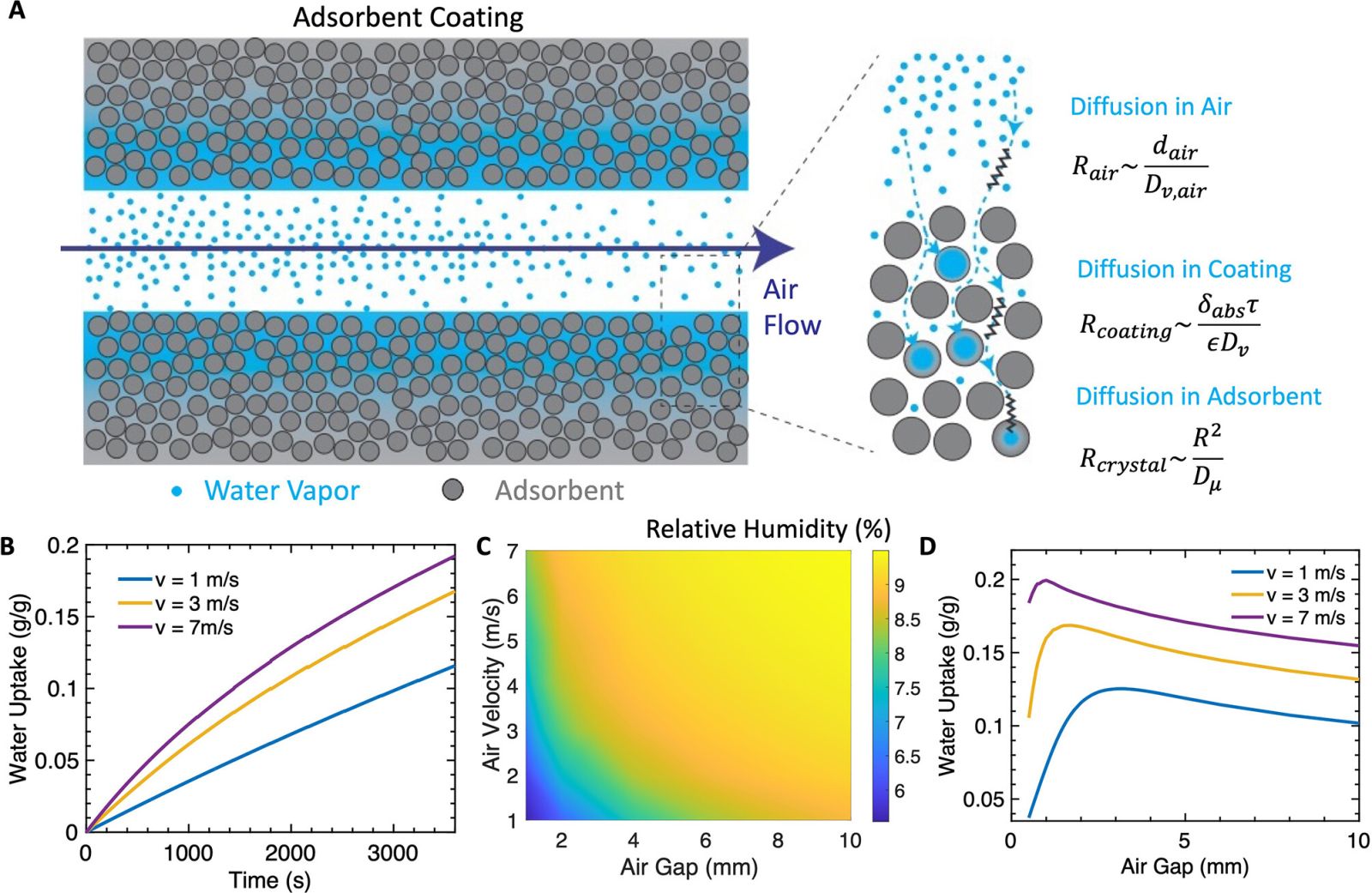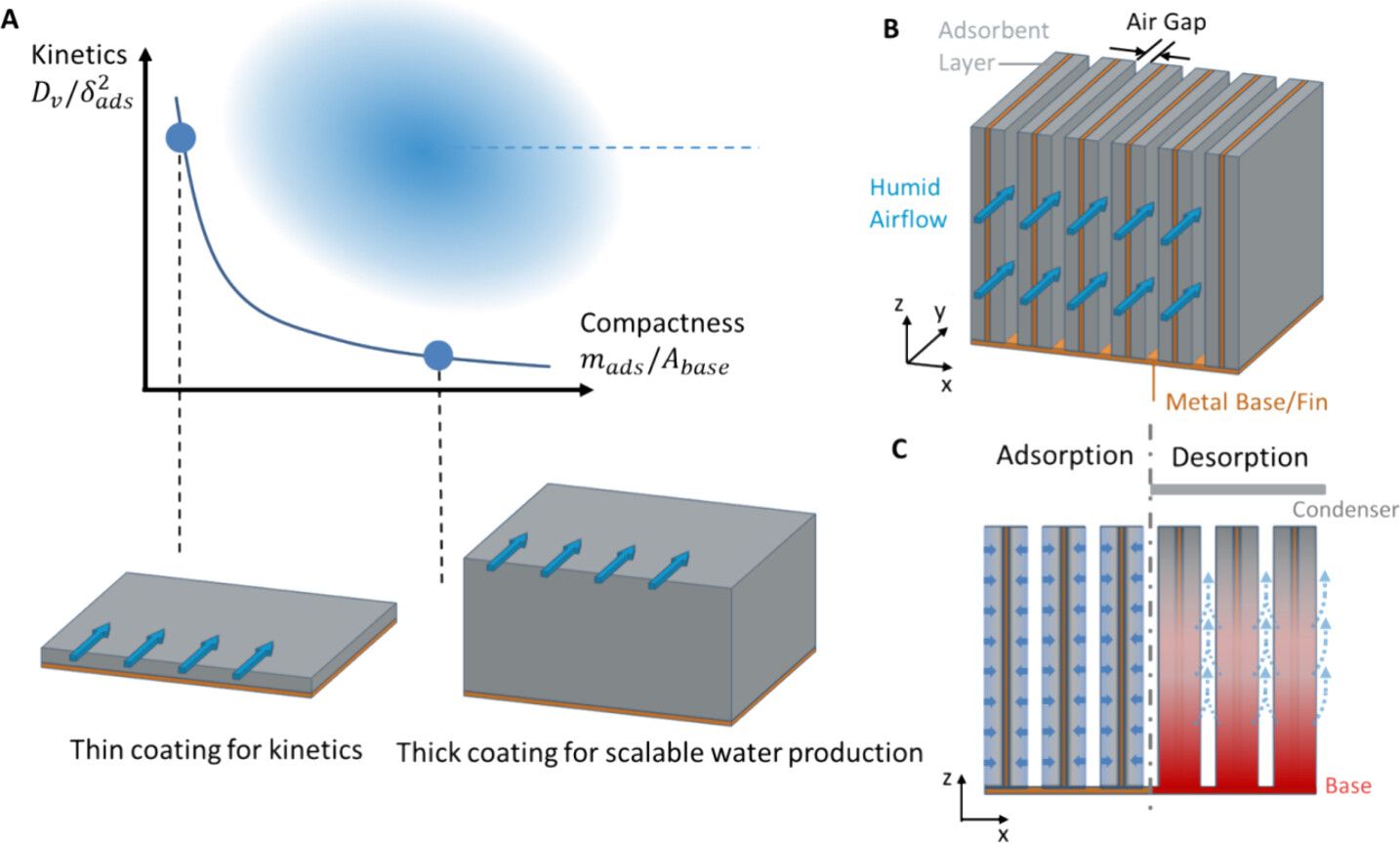A new solution to extract drinking water from the air
Published by Cédric,
Article author: Cédric DEPOND
Source: ACS Energy Letters
Other Languages: FR, DE, ES, PT
Article author: Cédric DEPOND
Source: ACS Energy Letters
Other Languages: FR, DE, ES, PT
Follow us on Google News (click on ☆)

The researchers have developed an innovative device, described in ACS Energy Letters, comprised of fins coated with an absorbent material. These fins trap moisture from the ambient air, which is then released in the form of drinking water when heated. This prototype could meet the growing water needs, particularly in arid regions.
The Earth's atmosphere contains trillions of liters (billions of gallons) of fresh water in the form of vapor. However, collecting this invisible and diluted resource remains a challenge. Current systems mainly capture dew or fog, but in dry areas, new materials such as temperature-sensitive hydrogels, metal-organic frameworks, or zeolites (crystalline aluminosilicates) can extract small quantities of moisture from the air and release the water when heated.
To make these absorbents practical, they must be integrated into compact and portable devices using a residual heat source. With this goal in mind, Xiangyu Li, Bachir El Fil, and their colleagues developed a moisture collector that meets these specifications.
The researchers designed adsorbent "fins" by inserting a copper sheet between copper foams coated with commercially available zeolite. Unlike previous studies that focused on material development, this co-design of the adsorption bed and material properties resulted in thin, compact fins capable of rapidly harvesting water.

To demonstrate this concept, they created a device with ten small adsorbent fins placed side by side on a copper base plate, spaced 2 millimeters apart. This configuration optimizes moisture capture in desert-like air with a relative humidity of 10%. Within an hour, the fins become saturated and then release the trapped moisture when the base reaches 184°C (363°F).
By extrapolating these results to 24 cycles of collection and release, the team calculated that one liter of absorbent coating on the fins could produce up to 1.3 liters (1.4 quarts) of drinking water per day in air with a relative humidity of 30%. This volume is two to five times higher than that of previously developed devices.
This study opens up interesting prospects for the rapid capture of moisture and harvesting water from dry air multiple times a day. With further developments, this system could be integrated into existing infrastructures producing residual heat, such as buildings or transport vehicles, to provide a cost-effective and sustainable solution for drinking water production in arid regions.
Bachir El Fil, co-author of the study, concludes: "This device could help meet the growing demand for water, especially in areas where access to this resource is limited."